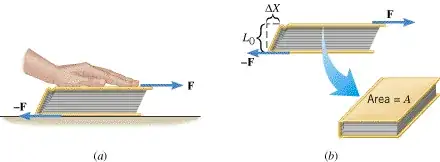I think this is a complex situation than cannot be resolved only considering rigid bodies. IRL everything is "deformable" and as a result not all parts of a sliding body may move with the exact same speed.
As a body is sliding under friction it is reasonable to assume that the force of friction deforms the body in a shear fashion like this:

Now, at the moment where the object stops (or rather starts to stop), the friction force might instantaneously jump up in order to remove enough momentum from the bottom part of the object to stop (at an instant).
But the rest of the body will still be in motion, and a damped oscillation would occur during which the contact friction force will vary. In the end the motion and friction will die down.
Qualitatively I would describe the situation as follows:

You can imagine the molecules binding up as some very small speed at the bottom, and the top part swinging back and forth for a short amount of time.

